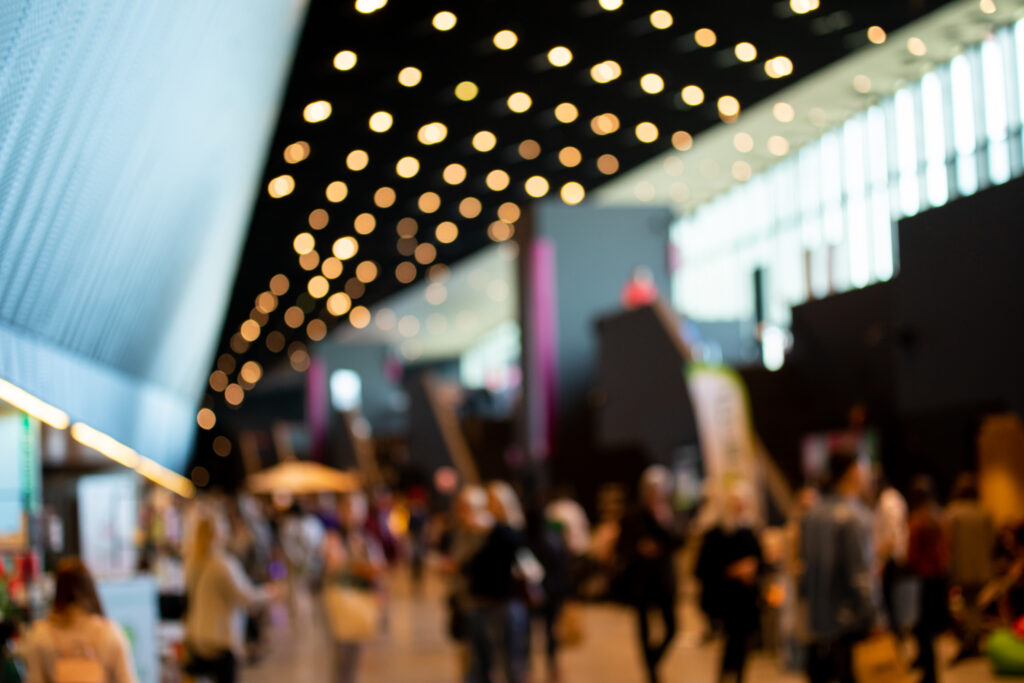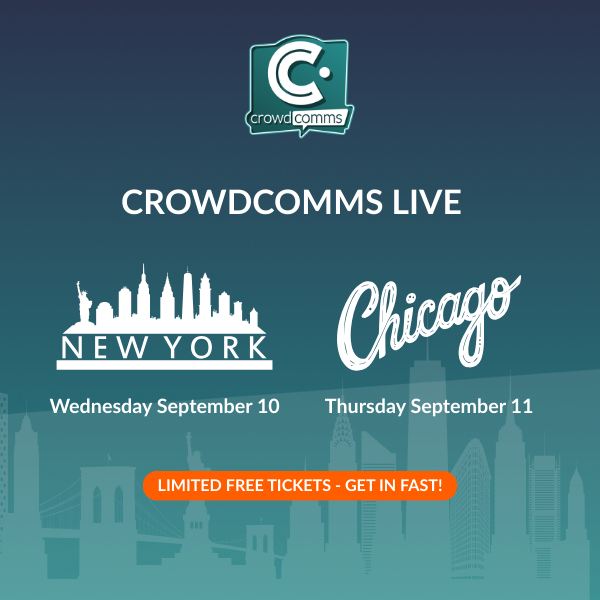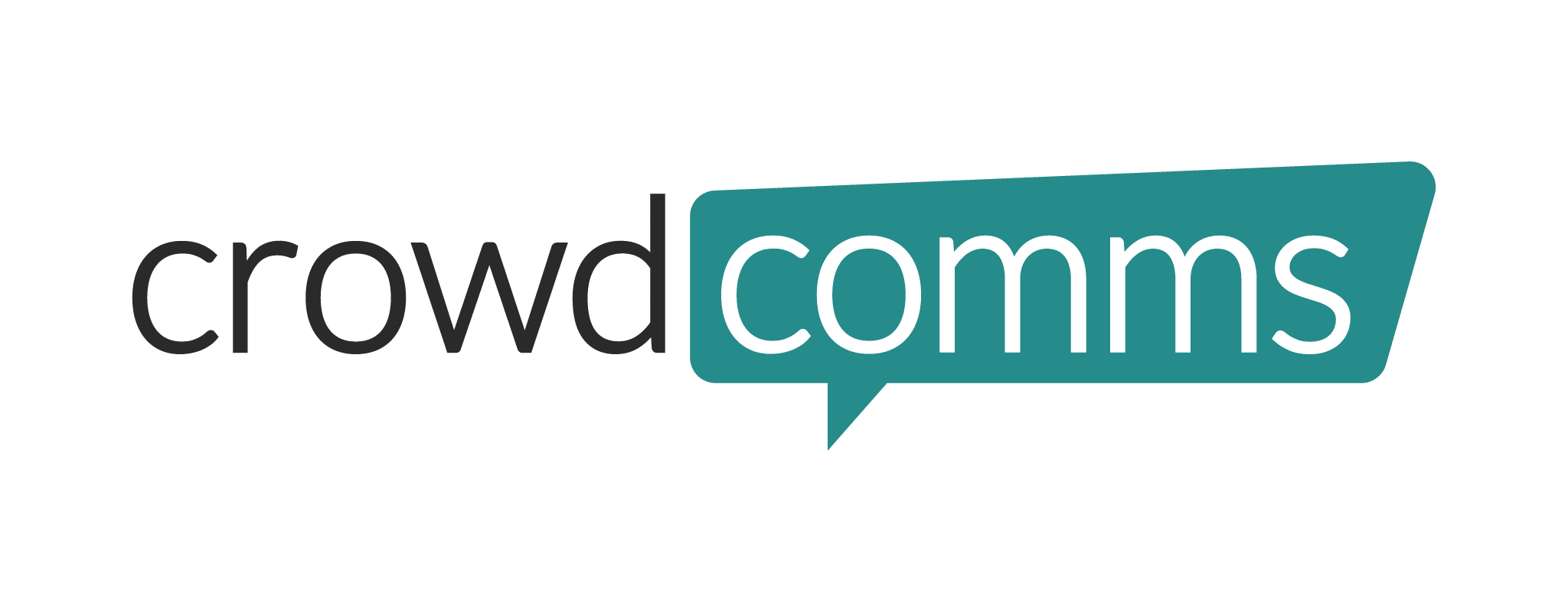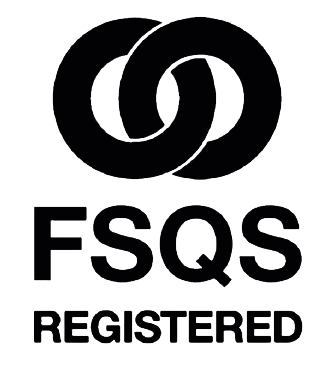
Today, where online marketing dominates, exhibiting at a trade show can build human connection and create lasting impressions on potential customers that are often hard to achieve through virtual channels.
However, for first-time exhibitors, trade shows can be overwhelming and intimidating – there are many tasks to do, from setting up a booth to event networking with other exhibitors; there’s a lot to consider before making your debut at a trade show as well as deciding what tools to use.
In this exhibiting top tips guide, designed for the events industry, we’ll provide you with tips and tricks to ensure that your first time exhibiting is a success including recommending lead generation applications to use. In this exhibiting top tips guide, we’ll provide you with tips and tricks to ensure that your first time exhibiting is a success.
Why Exhibit at a Trade Show?
Trade shows provide a platform to showcase your products, build relationships, and create lasting impressions. For small businesses, it‘’s an opportunity to reach a broader audience without the noise of the internet and enable you to gather immediate feedback (and sales!) from potential customers, which can be pivotal for refining your offerings.
There are added bonuses of exhibiting such as additional media coverage (press will be wandering the aisles!), partnerships or further promotional activations.
Event professionals play a crucial role in enhancing the quality and success of trade shows. They utilize advanced event technology and security measures to create engaging and safe experiences for attendees, highlighting the importance of branding and strategic planning in the modern events industry.
For first-time exhibitors, understanding the significance of trade shows can help you leverage this unique opportunity. It‘’s not just about setting up a booth; it‘’s about strategically positioning your brand in front of a targeted audience.
Pre-Planning Your Trade Show Debut
Setting Clear Goals
Before you even book a space, it‘’s crucial to set clear objectives. Are you looking to generate leads, launch a new product, or simply increase brand awareness? Knowing your goals will guide every decision you make, from booth design to promotional strategies. Additionally, choosing the right event software is essential to effectively meet your objectives and ensure the success of your event.
Choosing the right Trade Show
The first step in becoming a successful exhibitor is choosing the right trade show to participate in.
With so many options available, you need to do your research and find a trade show that aligns with your business goals and target audience. Questions you should ask yourself:
- What is the theme of the trade show?
- Who will be attending – potential customers, industry experts, or both?
- Do you know any previous exhibitors like you that have had success at this trade show?
- What are the estimated costs for participating in the trade show?
- What are you hoping to achieve by attending this trade show?
Once you have narrowed down your options, it’s essential to review the exhibitor’s package thoroughly. The package should outline important information such as booth size, location, and fees associated with participating but be careful – something that catches a lot of first time exhibitors out are additional costs such as lead capture, electrics for your stand as well as lighting!
Event Technology Essentials
What is Event Tech?
Event technology, often referred to as event tech, is the backbone of modern event planning and execution. It encompasses a wide array of tools, software, and platforms designed to help event organizers streamline their processes, enhance the attendee experience, and ultimately boost event revenue.
From event registration systems that simplify the sign-up process to mobile event apps that keep attendees engaged and informed, event tech is indispensable. It also includes virtual event platforms that have become crucial in the era of hybrid and virtual events, as well as data analytics tools that provide valuable insights into event performance. By leveraging all the tools available in event technology, organizers can create more efficient, engaging, and profitable events.
Designing an Engaging Exhibit with Event Technology
Your booth is your storefront for the duration of the trade show, so make it count.
Invest in professional booth design that reflects your brand’s personality. You don’t have to go all out with fancy displays and expensive props – a well-designed booth with clear messaging and visuals can make a lasting impact on visitors. Just make sure the key message you want to convey to visitors walking the aisle is clear!
Also, remember the practical aspects of your booth, such as lighting and storage space. A cluttered or dimly lit booth can be off-putting to visitors.

Utilising Promotional Materials at Your Stand
Promotional materials are an essential part of exhibiting at a trade show. From business cards to brochures to branded giveaways, these materials are crucial for creating brand awareness and generating leads.
You can go digital with smart screen displays or keep it traditional with printed materials – just make sure they align with your brand’s image and messaging. Whichever way you do it, ensure your promotional materials align with your overall goals and are eye-catching to attract visitors to your booth.
Promotional Strategies to Attract the Right Audience
Social Media Campaigns
Leverage social media to create buzz before the event. Announce your participation, share sneak peeks of your booth, and use event-specific hashtags to reach a wider audience. Engaging content can drive traffic to your booth and increase brand visibility such as running a competition or offering exclusive discounts to those who visit your booth. Give attendees a flavour of what they can expect when they meet you at the event.
Email Marketing
Send out targeted emails to your existing customer base and leads. Ensure you include:
- your stand location – include a map if you can, make it easy
- what you’re showcasing and why they should visit your stand
- any promotions or exclusive offers available at the event
Make it easy for them to add the event to their calendars by including an ical invite for the event name with your company’s name in the title.

Best Practices During the Trade Show
Engaging with Visitors for Attendee Engagement
First impressions matter. Train your team to be approachable, knowledgeable, and enthusiastic. Engage visitors with meaningful conversations rather than hard sells such as understanding their needs and offering solutions. Remember, it’s not just about making a sale today; it’s about building relationships.
Effective Lead Capture
Leads are the lifeblood of trade show success for exhibitors and sponsors. Use lead capture technology like mobile event apps to collect contact information efficiently and dive into your data analytics to effectively measure event ROI. Ensure your team qualifies scans on the spot for more effective follow-up. The more notes you take, the better your follow up – which you can read more about in our 2024 Blog titled Nailing Your Event Follow-Up.
Networking with Event Professionals
Networking isn’t just for attendees. Building relationships with other exhibitors can lead to unexpected opportunities and long-lasting partnerships. Whether it’s a future partnership or simply sharing insights, networking adds immense value to your trade show experience.
Fill your Event Day Calendar
Ensure you add important sessions to your calendar (the ones that everyone will be talking about – so you can be knowledgeable on the subject), as well as important info such as the main exhibiting hours, after show parties and networking opportunities enabling attendees to connect.
It’’s essential to make time for these and attend them. Not only will you expand your knowledge, but you may also meet other industry professionals who can offer valuable insights.
Additionally, selecting the right event technology tailored for your next event is crucial to ensure seamless execution, whether it’s in-person, virtual, or hybrid.
Post-Show Analysis and Follow-Up
Measuring Success and Event Revenue
Once the show is over, it’s time to evaluate your performance. Measure key metrics like the number of leads generated, social media engagement, and overall traffic to your booth. Compare these against your initial goals to gauge success.
Following Up with Leads
Timely follow-up after you connect, is crucial for converting leads into customers. Send personalised emails thanking visitors for stopping by your booth and provide additional information based on your conversations. Maintain the momentum to keep your brand top-of-mind.
Evaluating Your Overall Performance
Take a critical look at what worked and what didn’t. Gather feedback from your team and analyse attendee responses and lead conversion. Use this information to refine your strategy for future trade shows, ensuring continuous improvement and maximising your exhibiting performance.

Conclusion
Trade shows offer a wealth of opportunities for small business owners, trade show exhibitors, and marketing professionals. By following this comprehensive guide—from pre-planning to post-show analysis—you’ll be well-equipped to make a lasting impact.
Remember, the key to success lies in meticulous preparation, engaging interaction, and thorough follow-up. With these strategies, your first trade show experience can be both rewarding and impactful.
Ready to take the plunge? Start planning your trade show debut today and watch your business flourish.





